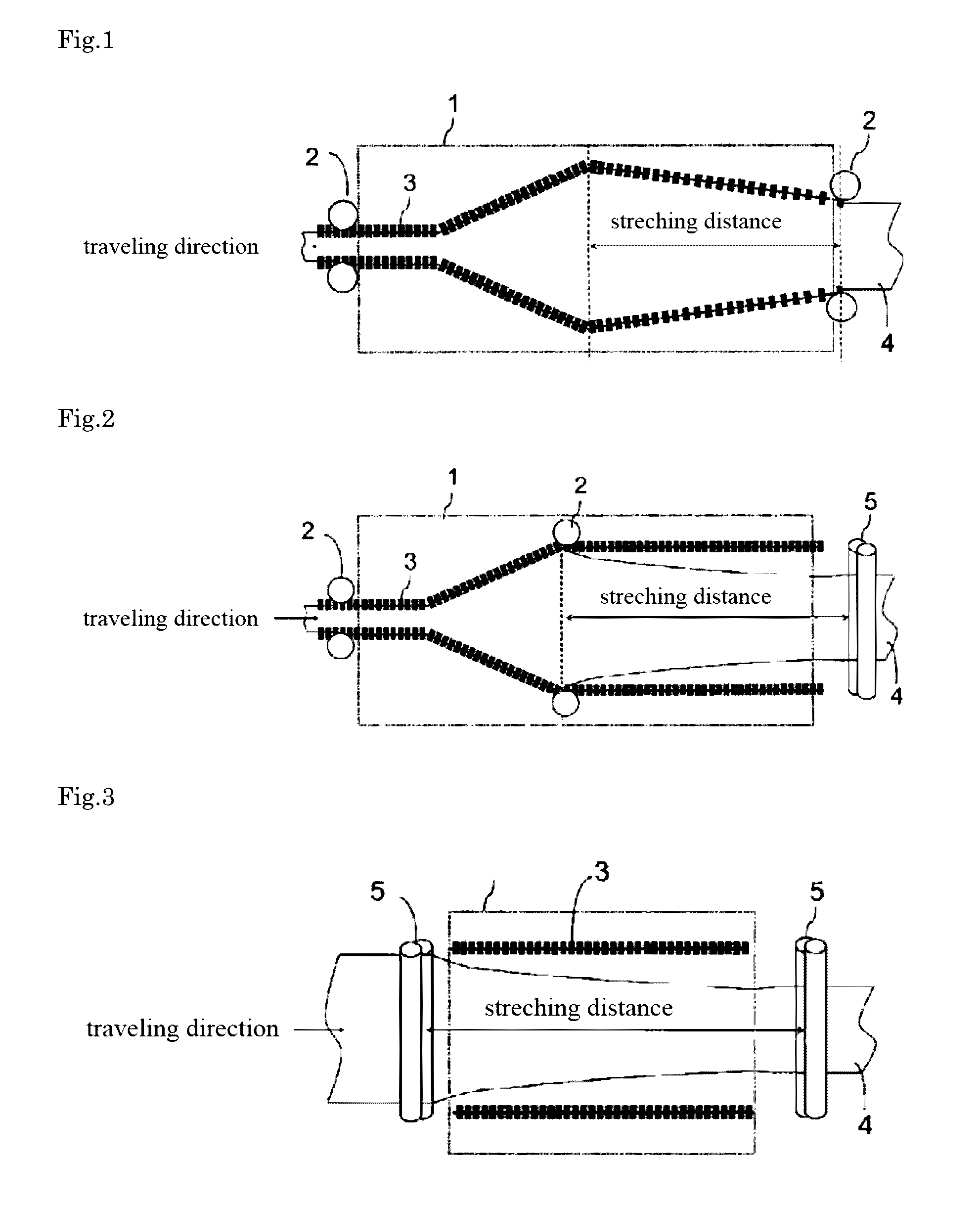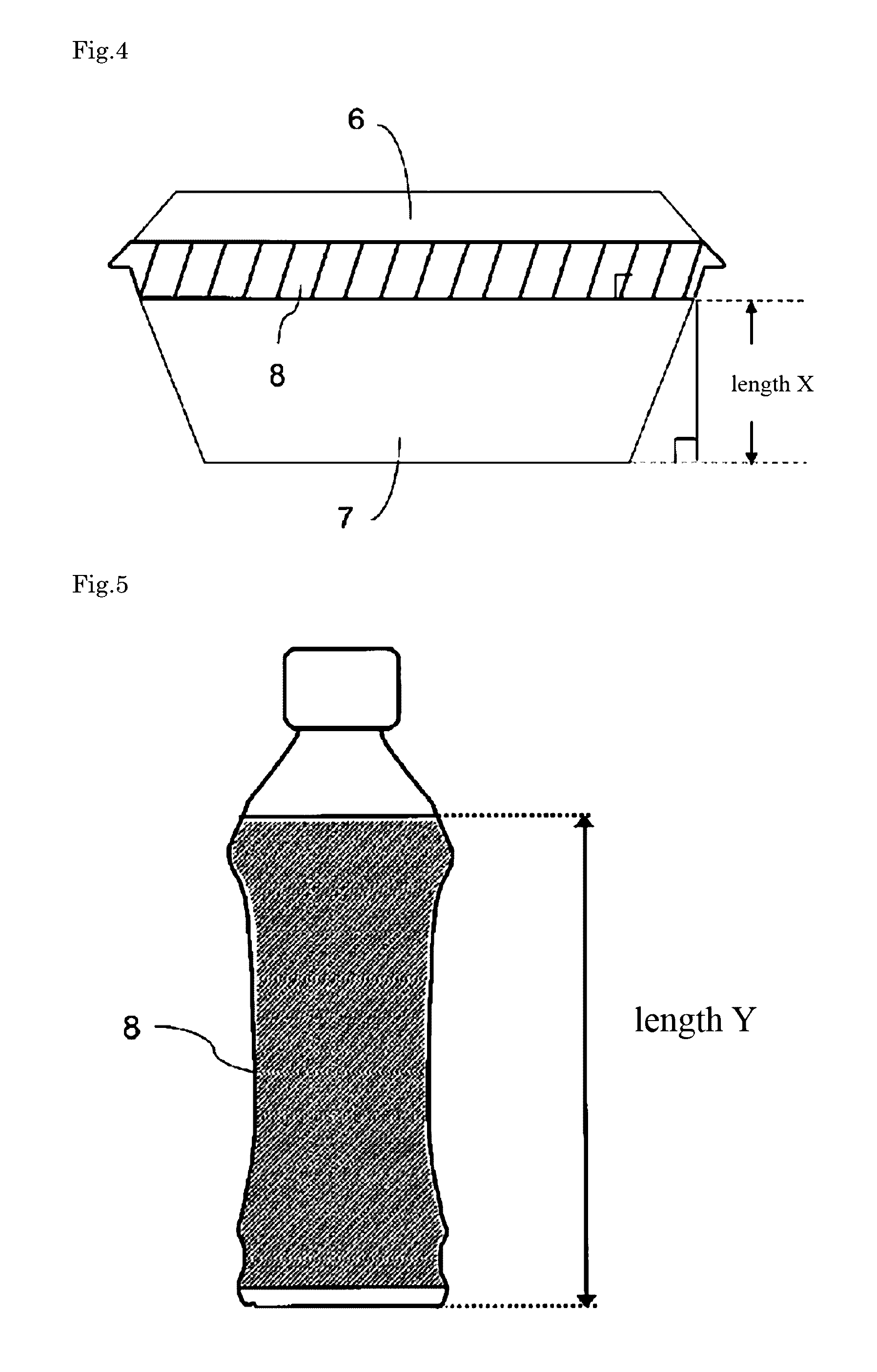Heat-shrinkable polyester film
- Summary
- Abstract
- Description
- Claims
- Application Information
AI Technical Summary
Benefits of technology
Problems solved by technology
Method used
Image
Examples
example 1
[0104]The above-mentioned polyester 1 and polyester 2 were mixed at a weight ratio of 93:7 and loaded to an extruder. Thereafter, the resin mixture was melted at 280° C. and extruded out of a T-die, and quenched by being wound around a rotating metal roll cooled to have a surface temperature of 30° C. to obtain an unstretched film with a thickness of 144 μm. The Tg of the unstretched film was 75° C. Thereafter, this unstretched film was introduced into a simultaneous biaxial stretching machine. After the unstretched film introduced into the tenter was then preliminarily heated until the film temperature reached 100° C., the film was stretched 4.0 times at 90° C. in the transverse direction and thereafter stretched 2.0 times at 90° C. in the vertical direction by widening the interval between the clips. At that time, the vertical stretching distance was 2000 mm. Further, at the time of the vertical stretching, the tenter width was narrowed by 10% after the transverse stretching to re...
example 2
[0105]A heat-shrinkable film was continuously produced by the method similar to that in Example 1, except that the polyester 3 and the polyester 2 were mixed at a weight ratio of 93:7 and loaded to an extruder. The Tg of the unstretched film was 75° C. Further, the width shrinkage ratio at the time of vertical stretching was 10%. Furthermore, the characteristics of the obtained film were evaluated by the methods similar to those in Example 1. The evaluation results are shown in Table 2. As a result of the evaluations, the film was found to have sufficient shrinkage characteristics, good shrinkage finishing property, and few flaws.
example 3
[0106]A heat-shrinkable film was continuously produced by the method similar to that in Example 1, except that the polyester 4 and the polyester 2 were mixed at a weight ratio of 93:7 and loaded to an extruder. The Tg of the unstretched film was 75° C. Further, the width shrinkage ratio at the time of vertical stretching was 10%. Furthermore, the characteristics of the obtained film were evaluated by the methods similar to those in Example 1. The evaluation results are shown in Table 2. As a result of the evaluations, the film was found to have sufficient shrinkage characteristics, good shrinkage finishing property, and few flaws.
PUM
| Property | Measurement | Unit |
|---|---|---|
| Temperature | aaaaa | aaaaa |
| Length | aaaaa | aaaaa |
| Fraction | aaaaa | aaaaa |
Abstract
Description
Claims
Application Information
 Login to View More
Login to View More - R&D
- Intellectual Property
- Life Sciences
- Materials
- Tech Scout
- Unparalleled Data Quality
- Higher Quality Content
- 60% Fewer Hallucinations
Browse by: Latest US Patents, China's latest patents, Technical Efficacy Thesaurus, Application Domain, Technology Topic, Popular Technical Reports.
© 2025 PatSnap. All rights reserved.Legal|Privacy policy|Modern Slavery Act Transparency Statement|Sitemap|About US| Contact US: help@patsnap.com


